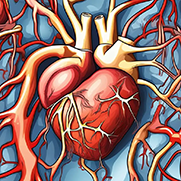Atoms are the smallest building blocks of matter. Under the basic quantized physical and chemical framework, through the guidance of atoms in the preparation process, it is theoretically possible to prepare new materials, construct efficient devices and create advanced systems. This is a kind of extreme atomic scale manufacturing technology, namely atomic fabrication. Atomic fabrication enables the customization of the structure and properties of materials on demand, which will promote technological change in the field of material science.
(1) Our group developed the liquid metal chemical vapor deposition (LMCVD) strategy to achieve the precise assembly of the atoms, leading to the accurate atomic fabrication of 2D materials and their heterostructures.
(2) We also devote ourselves to the exploration of new properties and unique behaviors in the 2D materials and liquid metal, such as the smart response to the environmental stimulus, energy conversion, self-healing and other quasi-biological effects.
(3) We look forward to opening the new territory in the 2D materials and liquid metal and offering new concept to understand these new life forms. Emerging applications based on 2D materials and liquid metal are just at the best stage and will continuously bring new breakthroughs.













































